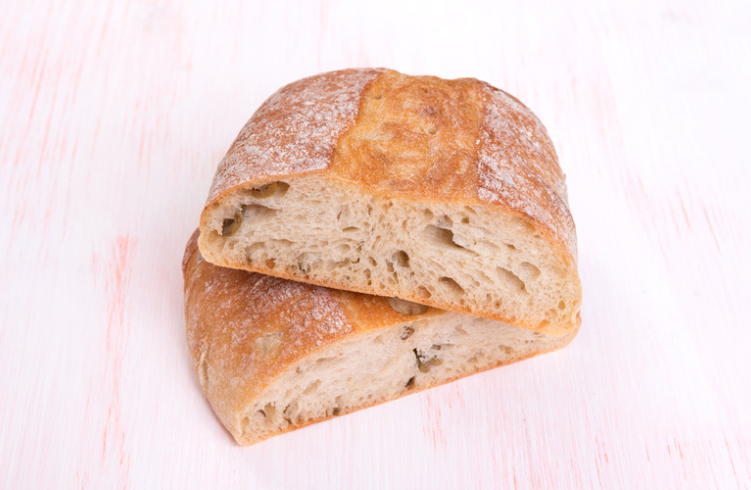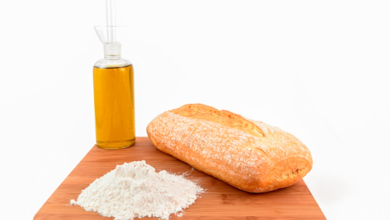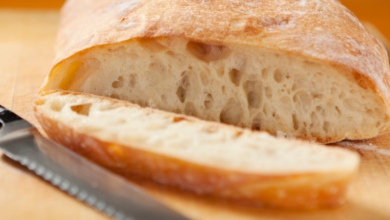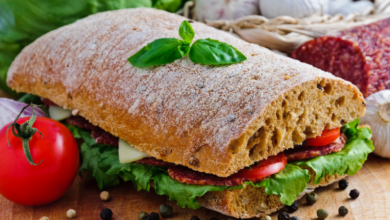Does ciabatta bread have wheat? Is it like regular white bread?

What To Know
- The wheat flour used in ciabatta bread is typically a strong bread flour with a high protein content, which contributes to the bread’s elasticity and chewy texture.
- These alternatives may use alternative flours, such as almond flour, coconut flour, or tapioca flour, to provide a similar texture and flavor to traditional ciabatta bread.
- Traditional ciabatta bread contains wheat flour, while gluten-free ciabatta bread uses alternative flours, such as almond flour or coconut flour, to provide a similar texture and flavor.
When it comes to bread, understanding the ingredients is crucial for individuals with dietary restrictions. One frequently asked question is: “Does ciabatta bread have wheat?” This blog post will provide a comprehensive analysis to answer this question and shed light on the nutritional aspects of ciabatta bread.
What is Ciabatta Bread?
Ciabatta bread, originating from Italy, is a popular bread known for its airy, open crumb and crispy crust. It is typically made with a combination of high-quality wheat flour, water, yeast, and salt.
Does Ciabatta Bread Have Wheat?
Yes, ciabatta bread contains wheat flour. Wheat is the primary ingredient in ciabatta bread, providing the structure and texture that characterize this bread. The wheat flour used in ciabatta bread is typically a strong bread flour with a high protein content, which contributes to the bread’s elasticity and chewy texture.
Nutritional Value of Ciabatta Bread
Ciabatta bread offers a range of essential nutrients, including:
- Carbohydrates: Ciabatta bread is a good source of carbohydrates, providing energy for the body.
- Protein: It contains a moderate amount of protein, contributing to muscle growth and repair.
- Fiber: Ciabatta bread is a good source of dietary fiber, which promotes digestive health and satiety.
- Vitamins and Minerals: It contains several vitamins and minerals, such as vitamin B1 (thiamine), vitamin B2 (riboflavin), and iron.
Is Ciabatta Bread Healthy?
The healthiness of ciabatta bread depends on individual dietary needs and preferences. For individuals with wheat allergies or celiac disease, ciabatta bread is not a suitable option. However, for those without wheat sensitivities, ciabatta bread can be part of a balanced diet.
Gluten-Free Ciabatta Bread
For individuals with gluten sensitivities, gluten-free ciabatta bread alternatives are available. These alternatives may use alternative flours, such as almond flour, coconut flour, or tapioca flour, to provide a similar texture and flavor to traditional ciabatta bread.
Choosing the Right Ciabatta Bread
When selecting ciabatta bread, consider the following factors:
- Ingredients: Check the ingredient list to ensure that the bread contains wheat if you are not allergic or intolerant.
- Freshness: Choose freshly baked ciabatta bread for optimal flavor and texture.
- Quality: Opt for ciabatta bread made with high-quality ingredients and a reputable bakery.
In a nutshell
Ciabatta bread is a versatile bread that can be enjoyed by individuals without wheat sensitivities. Its open crumb structure and crispy crust make it a popular choice for sandwiches, salads, and other culinary creations. While traditional ciabatta bread contains wheat flour, gluten-free alternatives are available for individuals with dietary restrictions. By understanding the ingredients and nutritional value of ciabatta bread, you can make informed choices that align with your dietary needs.
Information You Need to Know
Q: Is ciabatta bread safe for people with celiac disease?
A: No, traditional ciabatta bread is not safe for individuals with celiac disease as it contains wheat flour.
Q: What is the main ingredient in ciabatta bread?
A: The main ingredient in ciabatta bread is wheat flour.
Q: Is ciabatta bread a good source of protein?
A: Ciabatta bread contains a moderate amount of protein, contributing to muscle growth and repair.
Q: What is the difference between traditional ciabatta bread and gluten-free ciabatta bread?
A: Traditional ciabatta bread contains wheat flour, while gluten-free ciabatta bread uses alternative flours, such as almond flour or coconut flour, to provide a similar texture and flavor.
Q: How can I choose high-quality ciabatta bread?
A: When selecting ciabatta bread, check the ingredient list for high-quality ingredients, opt for freshly baked bread, and choose a reputable bakery.





